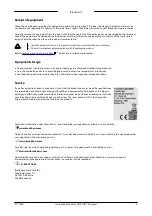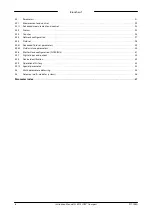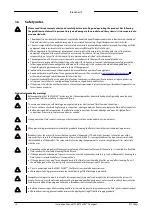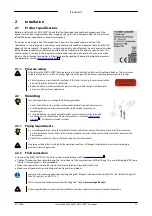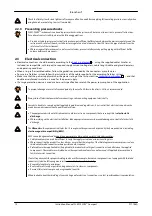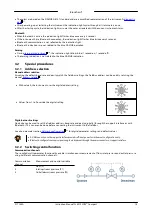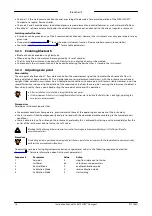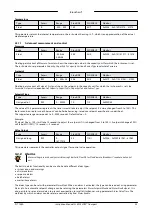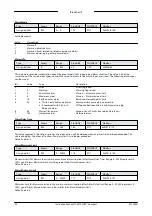
Bronkhorst®
Instruction Manual FLEXI-FLOW™ Compact
9.17.158A
12
Check the fluid system for leak tightness after any modification and before applying full operating pressure, especially when
using hazardous media (e.g. toxic or flammable).
2.2.3
Preventing pressure shocks
FLEXI-FLOW™ instruments can handle pressure shocks in the system well, but are not insensitive to pressure fluctuations.
For optimal control stability, observe the following guidelines:
·
Provide a stable (pressure controlled) inlet pressure; put sufficient buffer volume between the pressure regulator and the
instrument. As a rule of thumb, install pressure regulators at a distance of at least 25 times the pipe diameter from the
inlet or outlet of the instrument.
·
When using multiple instruments and/or control valves, prevent interference by putting piping with sufficient buffer
volume between components.
2.3
Electrical connection
·
Electrical connections should be made according to the
, using the supplied cables (insofar as
included) or compatible, with respect to required supply current, voltage loss, cable length, cable and gland diameters
and operating conditions.
·
When using self-assembled cables, follow the guidelines provided by the connectors' manufacturer.
·
For use in a fieldbus system, follow the instructions of the cable supplier for the according fieldbus system.
·
Make sure that the power supply matches the power rating of the instrument (see
) and that
double or reinforced insulation is used for the power supply.
·
If a surge protection device is used, make sure its specifications match the power consumption of the application.
To prevent damage as a result of reversed polarity, the use of a 2A fuse in the Us line is recommended.
Always turn off electrical power before connecting or disconnecting equipment electrically.
In order to be able to comply with all applicable guidelines and regulations, it is essential that electrical connections be
made by or under supervision of a qualified electrician.
·
The equipment described in this document contains electronic components that are susceptible to
electrostatic
discharge
.
·
When working on the electrical installation, take appropriate measures to prevent damage as a result of electrostatic
discharge.
The
CE mark
on the equipment indicates that it complies with requirements imposed by the European Union, including
electromagnetic compatibility (EMC)
.
EMC can only be guaranteed by applying appropriate cables and connectors or gland assemblies:
·
Cable wire diameters must be sufficient to carry the supply current and minimize voltage loss.
·
When connecting the product to other devices, ensure that the integrity of the shielding remains uncompromised; use
shielded cables and connectors where possible and/or required.
·
Preferably use the supplied cables (if applicable) to make electrical (signal) connections to and between the supplied
components. These cables are shielded, have the required wire diameter, and loose ends (if applicable) are marked to
facilitate correct connection.
If not all requirements for proper shielding can be met (for example, because a component is not equipped with shielded
connectors), take the following measures to ensure the best possible shielding:
·
Keep cable lengths at a minimum.
·
Route cables as closely as possible alongside metal structures or components.
·
Ensure all electrical components are grounded to earth.
When in doubt about the shielding of your cabling and/or electrical connections, contact your Bronkhorst representative.
9
9



